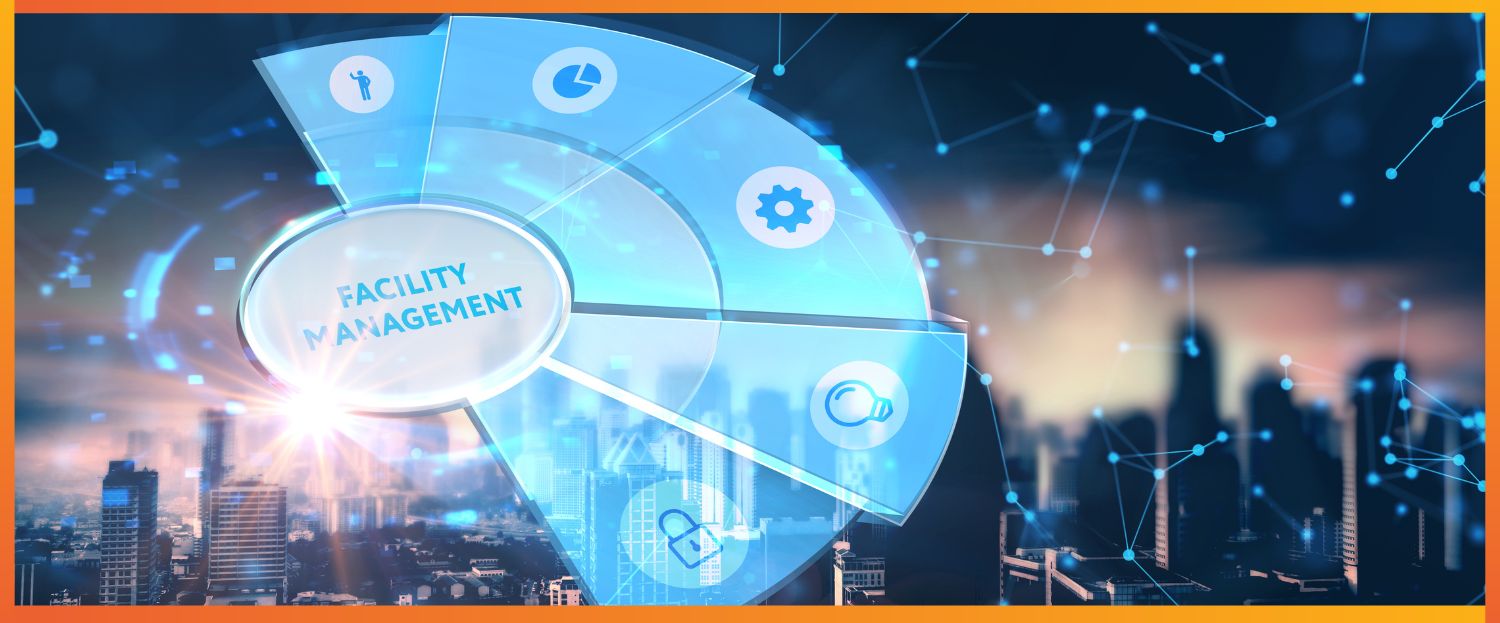Hot Desking 101: Maximising Office Space and Flexibility
Hot desking is a modern approach to office space management where you don't have a permanent desk, instead opting to occupy workspace as needed. It's a flexible system that allows you, and others like you, to choose where you sit on any given day. This method has gained popularity as organisations adapt to the changing landscape of work, recognising the need to cater to various schedules and preferences in the workforce.
The transition to hot desking can liberate you from the constraints of a fixed location, offering a variety of workspaces that suit different tasks and work styles. Whether you're focusing on independent projects or collaborating with colleagues, hot desking can facilitate the process by providing an environment that meets your immediate needs. Affording employees the autonomy to choose their workspace can also contribute to increased job satisfaction and productivity.
When hot desking is effectively implemented, you might find the balance between remote work and in-office presence becomes less of a juggling act. If your organisation encourages flexibility, adopting hot desking could provide you with the adaptability to merge the social and collaborative benefits of the office with the convenience of working remotely, leading to a dynamic and efficient work environment.
Understanding Hot Desking
Firstly, let's gain a clear and concrete understanding of hot desking, a workplace strategy that caters to the needs of modern businesses and their employees.

Hot Desking Defined
Hot desking is a flexible office arrangement where you, along with other employees, do not have a permanently assigned desk. Instead, workspaces are available on a first-come, first-served basis, allowing you to choose where to sit each day. This method is particularly beneficial for remote workers who may not be in the office full time, as it maximises the use of available space without leaving desks empty.
Comparison to Traditional Office Space
Unlike traditional office settings where each employee is allocated a specific desk, hot desking fosters flexibility and can contribute to a dynamic working environment. Traditional offices may seem inefficient, especially if many desks are often unoccupied due to staff being onsite irregularly. In contrast, hot desking makes it easier to accommodate fluctuating numbers of present employees.
Pros and Cons of Hot Desking
✅ Advantages:
- Flexibility: It suits a variety of working preferences and schedules, especially for remote workers.
- Space Optimisation: It helps in using office space more efficiently.
- Cost Saving: Potentially reduces the required office size and associated costs.
❌ Disadvantages:
- Lack of Personal Space: You might miss having a space that's 'yours' with personal items.
- Hygiene Concerns: Sharing desks can lead to hygiene issues if not managed properly.
Hot desking can sometimes be part of a broader coworking space environment, where not only are desks shared, but entire offices and facilities too, emphasising collaboration and networking. Whether this approach to office space is right for you depends on your specific needs and working style.
The Impact on Productivity and Collaboration
When you consider hot desking, your primary concerns may be how it affects productivity and fosters a collaborative environment. This section delves into the nuanced effects hot desking has on these aspects of the workplace.

Enhancing Collaboration and Teamwork
Hot desking can serve as a catalyst for improving teamwork. By removing the fixed seating arrangements, you and your colleagues may find that interacting and networking with different departments becomes easier. Frequent changes in your work environment can encourage communication across different teams, potentially leading to unanticipated collaborations and knowledge sharing. For instance, sharing a desk with someone from another department could lead to a conversation that wouldn't have happened in a traditional office set-up.
Balancing Focus and Interactivity
Although hot desking can enhance collaboration, it can also present challenges in balancing the need for individual focus with team interactivity. Here's what you might experience:
- More opportunities to interact can lead to increased employee engagement, boosting morale.
- Without a permanent space, finding a balance between collaboration and concentration can be more complex.
It's crucial to address these challenges to ensure hot desking doesn't impede your ability to work effectively. This can mean creating zones within your workspace designated for different types of work, such as quiet areas for focus and open spaces for collaborative efforts.
Stimulating Creativity and Innovation
The change in scenery that comes with hot desking might just be the spark you need for heightened creativity and innovation. Being in a dynamic environment can stimulate your brain, leading to fresh ideas and creative solutions. You’re less likely to feel boxed in by the familiar, and more likely to:
- Engage with diverse perspectives, enriching the creative process.
- Experience a break from routine, which can help in solving problems in new ways.
Remember, a well-implemented hot desking system can have significant positive effects on both productivity and collaboration, but it's essential to monitor and adjust the way it's employed to ensure it continues to meet the needs of you and your organisation effectively.
Challenges and Solutions
When you consider adopting hot desking in your workplace, there are several challenges you need to navigate, such as safeguarding privacy and minimising interruption. Below, specific concerns are addressed with practical solutions to ensure hot desking is effectively managed.

Privacy Concerns
You may feel that hot desking impacts your privacy, as you do not have a personal space. To tackle this, use privacy screens on office desks to designate clear working spaces. This ensures you have a measure of seclusion even in a shared space and your confidential information is well-protected.
Minimising Disruption
The rotation of desks can lead to disruption and fragmented communication amongst team members. A structured booking system helps you to sit near your project teams, thereby maintaining communication flow. Also, designated quiet zones can be implemented for tasks requiring high concentration, reducing overall disruption.
Maintaining Cleanliness
With multiple individuals using a single workstation, maintaining cleanliness and hygiene can be challenging. Implementing a cleaning schedule and supplying sanitising stations help ensure workspaces remain hygienic. In addition, encouraging a culture of tidiness with personal responsibility for clearing desks can significantly improve cleanliness standards.
Strategic Implementation
Effective strategic implementation of hot desking is crucial for improving space utilisation, achieving cost savings, and facilitating a successful hybrid working environment. Your strategy should include a comprehensive plan, an efficient use of space, and the adoption of a hybrid model that integrates a seamless desk booking system.

Creating an Effective Hot Desking Plan
To create an effective hot desking plan, first identify your objectives and understand the specific needs of your workforce. A desk booking system is a cornerstone of this plan, streamlining the process by which employees reserve workspaces. This system should be user-friendly and accessible, ensuring that it supports, rather than hinders, daily operations.
By monitoring the booking system, you’ll be able to determine if more or less hot desks are needed to accommodate demand.
Space Utilisation and Efficiency
Maximising space utilisation leads directly to cost savings, by reducing the amount of unused office real estate. Analyse your current space usage and design a floor plan that supports a flexible work environment.
This should reflect a variety of work areas that cater to different activities, from collaboration to focused, individual tasks. Optimising the layout is key to making hot desking work effectively.
Adopting Hybrid Working Models
Hybrid working models are increasingly popular, providing a mix of in-office and remote working options. To successfully implement this, provide clear guidelines on how and when to use office space.
Your booking system should accommodate variable schedules and allow easy transition between remote and on-site work. This flexibility increases overall efficiency and employee satisfaction.
Facilities and Technologies
When it comes to hot desking, the facilities and technologies provided are critical to ensure a productive work environment. Your experience will largely depend on the availability of essential tech and supportive amenities.

Essential Hot Desking Technologies
WiFi Connection: A robust WiFi connection is non-negotiable. It’s the backbone of digital work, allowing you to stay connected to your team and access cloud services seamlessly.
- 💻 Laptops/Tablets/Smartphones: Ensure you have access to power sockets to keep your devices charged. Portable technology allows you to move freely and choose your workspace.
Meeting & Conference Rooms: Equipped with modern AV equipment are large collaborative meeting tables, meeting rooms and conference rooms should be bookable and include facilities for virtual meetings.
Facilities for Hot Deskers
- 🔒 Lockers: Secure lockers give you peace of mind that personal items and documents are safe while you move between workspaces.
Workspace: A variety of workspaces including standing desks, ergonomic chairs, and quiet zones cater to your comfort and work preferences.
Remember to use technologies and facilities responsibly, respecting the shared nature of the hot desking environment.
Economic Aspects of Hot Desking
In exploring the economic aspects of hot desking, you will find that this approach primarily offers a cost-effective solution for businesses and a method for reducing real estate risk.

Cost-Effective Solution for Businesses
Hot desking stands out as a financially savvy strategy for your business. By embracing this model, you have the potential to reduce the square footage you require, thus directly impacting office operating costs. It's not uncommon for employers to see a drop in expenses as hot desking can reduce the need for large, long-term office leases that are both rigid and costly. There's evidence that adapting to hot desking might save an entity between 15% to 25% in space requirements, which cascades into considerable financial savings.
- Space Optimisation: Maximising the use of available desks, making the office fuller.
- Flexibility: Avoiding the costs associated with empty or underused spaces.
Reducing Real Estate Risk
Switching to hot desking can help mitigate the risks associated with real estate, particularly for long-term commitments that don't align with fluctuating staff levels. By employing a hot desking system, you gain flexibility to respond to market changes without the weight of unused office space.
Utilising hot desks can lessen the risk posed by economic downturns, where a business might otherwise be left with redundant spaces that were once a considerable expense. With hot desking, you maintain space efficiency in a scalable, responsive manner, avoiding the pitfalls that come with fixed traditional office spaces.
- Scalability: Adjusting office space to current needs without changing premises.
- Responsiveness: Quickly adapting to increases or decreases in workforce size.
By addressing these subtleties, hot desking can provide you with economic benefits that are both immediate and impact the bottom line.
Culture and Community
In the modern office environment, hot desking plays a pivotal role in shaping the culture and fostering a sense of community. It's more than just shared workspaces; it's about creating an atmosphere that promotes interaction and inclusivity.

Fostering a Shared Community
When you engage in hot desking at coworking offices, you become part of a dynamic and varied network. This is a place where opportunities for collaboration flourish. Diverse professionals work side-by-side, fostering a rich tapestry of social interaction. Each interaction can seed future partnerships or spark a creative solution to a challenging problem.
- Sense of Community:
- Coworking offices provide communal spaces that encourage casual conversations and formal meetings.
- Events and workshops can serve as catalysts, drawing people together over shared interests or professional development activities.
Promoting Inclusivity and Belonging
Hot desking inherently promotes an inclusive atmosphere. Without a permanent station, you're free to mingle with colleagues from various departments, fostering a sense of belonging. It's crucial that all members feel valued and recognised for their unique contributions to the communal workspace.
- Inclusive Practices:
- Designated spaces for different types of work cater to diverse needs and working styles.
- Integrative policies ensure that everyone, regardless of their role or seniority, feels included in the shared workspace.
By participating in the hot desking culture, you encourage a community that values social interaction, appreciates diversity, and nurtures collaboration.
Benefits for Remote and Self-Employed Workers
Embracing hot desking can revolutionise your work life balance, offering flexibility and fostering innovation, specifically catered to your needs as a remote or self-employed worker.
Advantages for the Individual
Hot desking empowers you, the freelancer or self-employed professional, to define your own flexible schedules, thereby enhancing your work-life balance. As a remote worker, you gain the convenience of changing scenery, which can boost productivity and bring a refreshing change to the monotony of a home office. Here are some specific benefits:
- Flexibility: Choose when and where to work, crafting a schedule that suits your lifestyle.
- Networking Opportunities: Increase your connections by sharing spaces with like-minded professionals.
- Reduced Costs: Save on overheads with no need for a permanent office space.
- Variety of Work Environments: Explore different locations to find your most inspiring and productive settings.
Contributing to Employee Innovation
Hot desking isn’t just a space-saving solution; it’s a catalyst for employee innovation. The dynamic set-up encourages collaboration with a diverse network of professionals, leading to fresh insights and ideas. Here’s how it facilitates innovation:
- Exposure to New Perspectives: Regularly interacting with various individuals can lead to unexpected brainstorming and learning opportunities.
- Hybrid Working Models: Splitting your time between home and a hot desk can refresh your mindset, making it easier to innovate.
Work-Life Balance and Employee Wellbeing
In today's dynamic work environments, maintaining a healthy work-life balance and supporting employee wellbeing are paramount. The rise of hot desking and flexible working solutions emphasises the need to manage these aspects carefully.

Maintaining Work-Life Integration
Remote working has presented an opportunity for you to blend daily work tasks with personal life more seamlessly. When this flexibility is optimised, you can experience a more integrated work-life balance. However, desk sharing and hot desking can disrupt this balance if not properly managed.
For instance, the requirement to set up a computer every day can lead to wasted time, which might impede on your personal schedule. To counteract this, some companies are adopting desk hoteling systems where you can reserve workspaces ahead of time, reducing the time spent in preparation and promoting efficiency.
Supporting Employee Autonomy
A crucial aspect of wellbeing in the workplace is autonomy. The shift towards flexible working solutions grants you more control over your working patterns and environment. This latitude can enhance job satisfaction and reduce stress by allowing you to choose a workspace that fits your preferred style or task for the day. While the concept of hot desking means any desk is available, difficulty bonding with the team can arise if not carefully administered. Employers can facilitate better connections by ensuring that even in flexible arrangements, there are opportunities to foster consistent team interactions.
Future Trends in Hot Desking
Hot desking continues to evolve, shaped by technological innovation and the shifting needs of workers and enterprises. Expect a more integrated experience as hot desking becomes a central element of modern business strategies.
Innovation in Hot Desking
Technological advancements are propelling hot desking into new territory. As companies aim to provide flexible working solutions, expect to see smart booking systems and real-time desk availability features becoming the norm.
Your experience with hot desking will likely become more personalised, with AI-driven platforms suggesting the best desk for your tasks. This collaboration between digital and physical spaces is designed to enhance productivity and create a seamless work environment for you.
Predictions for Enterprises and Coworking Spaces
For enterprise companies, the trend points towards hoteling — a more structured form of hot desking. You'll be checking into pre-reserved workspaces, similar to hotel bookings. The goal is to balance the company's need for order with your desire for flexibility.
Coworking spaces are adapting, too. To stay competitive and meet the expectations of diverse workforces, they're likely to offer more than just a desk. Expect collaborative areas, advanced amenities, and networking events as part of your membership. Coworking spaces will increasingly resemble community hubs, focusing on the synergy between different professionals and businesses.
This drive towards innovation signifies not just a change in where you work, but how your work days unfold in the landscape of evolving flexible working solutions.
Frequently Asked Questions
Navigating hot desking efficiently requires understanding its mechanics and applications in the workplace. Here we address common inquiries to give you clarity on this modern office practice.
What are the benefits and drawbacks of hot desking in the workplace?
Hot desking optimises office space and fosters flexibility, especially in hybrid work models. It allows you to utilise workspaces that aren't assigned to any specific employee, offering a solution for when staff visits the office. However, it can also lead to instability and decreased morale, as constantly changing seating arrangements can hinder lasting colleague relationships.
How does hot desking differ from hoteling in a business environment?
While hot desking permits you to choose any available desk on arrival, hoteling involves pre-booking specific desks or spaces before coming to the office. Hoteling provides more predictability in seating arrangements and can better guarantee space availability.
What are the standard protocols and guidelines for employees engaging in hot desking?
Standard hot desking protocols may include checking in via a software system, cleaning up the workspace at the end of the day, and possibly storing personal items in designated lockers. It's also common for employees to be required to adhere to hot-desking guidelines designed to maintain a conducive work environment for all.
What considerations should be made before implementing a hot desking strategy?
Before implementing a hot desking strategy, consider the potential for wasted time as staff look for desks each day, costs associated with adaptable equipment and furniture, and ensuring there is enough desk space for all staff when in the office. Assessing your workforce's needs and preparing them for the transition is crucial.




